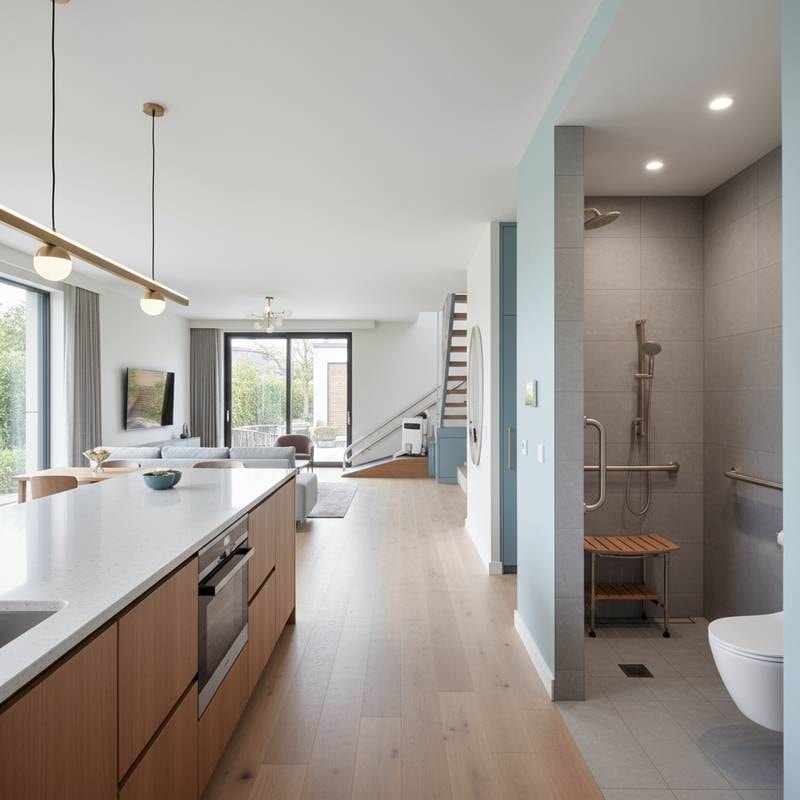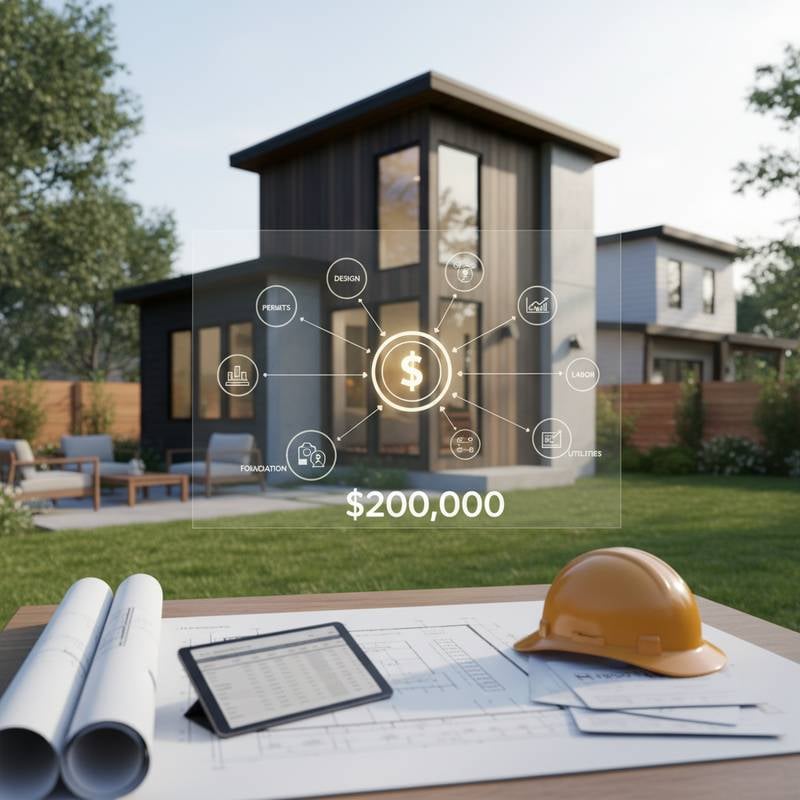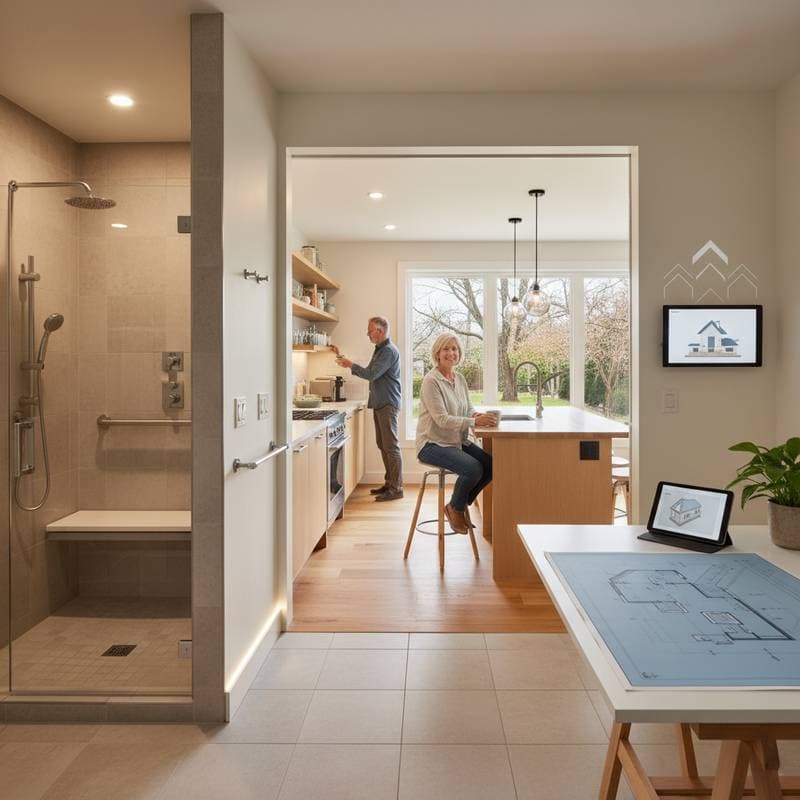Introduction to Aging-in-Place Remodeling
Homeowners increasingly seek modifications that support independent living as they age. Aging-in-place remodels incorporate universal design principles to create safer, more navigable spaces without the need for relocation. These updates address common challenges like mobility limitations and fall risks, allowing individuals to remain in familiar surroundings.
In 2025, rising material costs and labor rates influence project budgets, yet strategic planning can yield significant returns in quality of life and property value. This article examines typical expenses, high-impact upgrades, and steps for successful implementation. Readers gain insights to prioritize investments that align with personal needs and financial constraints.
Understanding the Costs
Aging-in-place remodels vary widely in scope and price. Basic enhancements, such as installing grab bars or lever handles, start at $500 to $2,000. More involved projects like bathroom overhauls range from $10,000 to $25,000, while full-home transformations can exceed $75,000.
Factors driving costs include home size, location, and material choices. For instance, urban areas often incur higher labor fees due to demand and regulations. Homeowners benefit from obtaining multiple quotes to compare options and identify value-driven proposals.
Breakdown of Common Expenses
-
Entryway and Mobility Aids: Widening doorways or adding ramps costs $1,500 to $5,000. Stairlifts average $3,000 to $7,000, depending on staircase configuration.
-
Bathroom Adaptations: Walk-in showers with benches and non-slip flooring run $8,000 to $20,000. Zero-threshold entries eliminate tripping hazards effectively.
-
Kitchen Modifications: Lowered counters and pull-out shelves range from $5,000 to $15,000. Touchless faucets and adjustable cabinetry enhance usability.
-
Lighting and Technology: Motion-sensor lights and smart home systems cost $1,000 to $4,000. These features improve visibility and convenience.
-
Accessibility Certifications: Hiring a contractor certified in universal design or aging-in-place remodeling ensures compliance with accessibility standards. Certification verification adds minimal cost but prevents future rework.
Overall, a mid-range project for a 2,000-square-foot home totals $40,000 to $60,000. Budget 10 to 15 percent extra for unforeseen issues like outdated wiring.
Key Design Choices for Safety and Comfort
Effective remodels prioritize features that reduce injury risks and promote ease of movement. Universal design elements benefit all ages, not just seniors. Select durable, low-maintenance materials to withstand daily use.
Bathrooms demand attention first due to slip dangers. Install fold-down benches in showers and raised toilets for stability. Kitchens require reachable storage and clear pathways at least 36 inches wide.
Incorporate smart technology for monitoring and automation. Voice-activated controls for lights and thermostats simplify routines. These additions not only aid independence but also appeal to future buyers.
Planning Your Remodel
Start with a professional assessment to identify priorities. Consult occupational therapists for personalized recommendations. Develop a phased approach to spread costs over time.
Research local incentives, such as tax credits for energy-efficient upgrades or accessibility grants. Document all decisions in a project binder for reference. This preparation minimizes disruptions and maximizes outcomes.
Money-Saving Strategies
-
Opt for modular components that install without major demolition.
-
Reuse existing fixtures where possible, focusing funds on high-traffic areas.
-
Schedule work during off-peak seasons for potential discounts.
-
Combine projects to reduce repeated labor charges.
These tactics help maintain budgets while achieving substantial improvements.
When to Hire a Professional
Homeowners handle simple tasks like adding grab bars, but complex work requires expert involvement. Professionals bring knowledge of codes and best practices that amateurs lack.
Hire a professional when projects involve:
-
Plumbing or electrical changes
-
Structural modifications such as removing walls or widening doors
-
Lift, ramp, or elevator installation
-
Work requiring permits or inspections
Such elements demand precision to avoid hazards and ensure durability.
How to Choose a Contractor
Select contractors with proven expertise in accessibility projects. Prioritize those who understand evolving needs over time.
-
Look for Certified Aging-in-Place Specialists (CAPS).
-
Request references from previous accessibility projects.
-
Verify licensing and insurance.
-
Ask for detailed written estimates and timelines.
A qualified professional ensures safety, code compliance, and long-term reliability. Review portfolios to confirm alignment with your vision.
Common Questions
How much should I budget for a full-home aging-in-place remodel?
Expect anywhere from $30,000 to $100,000 depending on the home size, condition, and scope of work. Factor in regional differences and material selections.
What part of the home should I update first?
Start with the bathroom and main entry since they present the biggest safety risks. These areas yield immediate benefits in daily function.
Do aging-in-place updates affect resale value?
Yes. Accessible features appeal to a growing number of buyers, especially in senior-friendly markets. They can increase property appeal by 5 to 10 percent.
Can I make my home accessible on a small budget?
Yes. Simple updates like grab bars, better lighting, and lever handles can make a big difference for a few hundred dollars. Focus on high-impact, low-cost changes.
Are permits required?
Yes, for plumbing, electrical, or structural changes. Always confirm with your local building department to avoid fines or delays.
Extending the Life of Your Upgrades
Regular maintenance preserves the functionality of aging-in-place features. Inspect grab bars and ramps annually for secure attachment. Test lighting and automation systems quarterly to catch issues early.
Reevaluate the home environment every two to three years as needs evolve. Minor refreshes, like updating flooring or enhancing contrast for visibility, sustain accessibility. Professional tune-ups every five years ensure ongoing performance.
These remodels transform homes into enduring allies for independent living. With informed choices and diligent care, homeowners secure comfort and security for years ahead.










